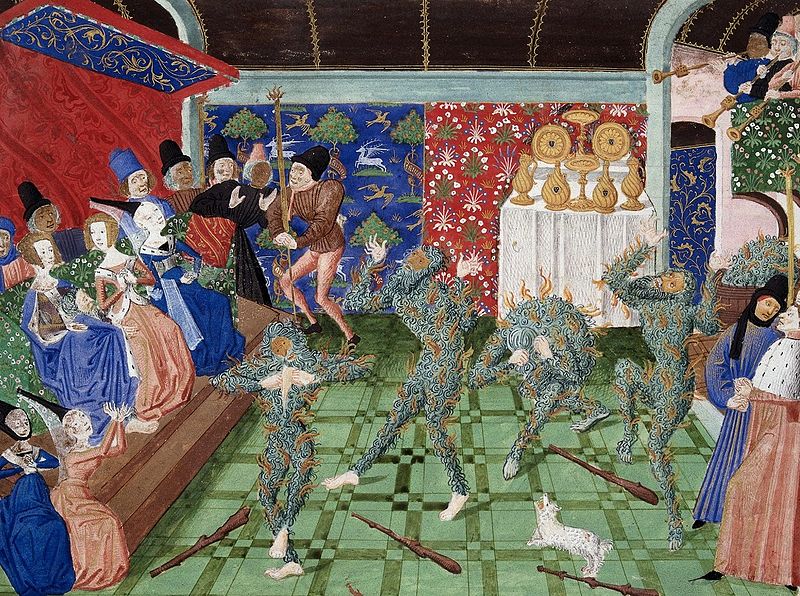Paris. January 28, 1393. The Ball of the Burning Men. (aka Bal des Sauvages - Ball of the Wild Men.) At a masquerade ball, four dancers caught fire and were killed; nearly killing King Charles VI, who was already suffering from periodic insanity.
https://en.wikipedia.org/wiki/Bal_des_Ardents
On the suggestion of Huguet de Guisay, whom Tuchman describes as well known for his “outrageous schemes” and cruelty, six high-ranking knights performed a dance in costume as wood savages. The costumes, which were sewn onto the men, were made of linen soaked with resin to which flax was attached “so that they appeared shaggy and hairy from head to foot”. Masks made of the same materials covered the dancers’ faces and hid their identities from the audience. Some chronicles report that the dancers were bound together by chains. Most of the audience were unaware that Charles was among the dancers. Strict orders forbade the lighting of hall torches and prohibited anyone from entering the hall with a torch during the performance, to minimize the risk of the highly flammable costumes catching fire.
According to historian Jan Veenstra the men capered and howled “like wolves”, spat obscenities and invited the audience to guess their identities while dancing in a “diabolical” frenzy. Charles’s brother Orléans arrived with Phillipe de Bar, late and drunk, and they entered the hall carrying lit torches. Accounts vary, but Orléans may have held his torch above a dancer’s mask to reveal his identity when a spark fell, setting fire to the dancer’s leg. In the 17th century, William Prynne wrote of the incident that “the Duke of Orleance ... put one of the Torches his servants held so neere the flax, that he set one of the Coates on fire, and so each of them set fire on to the other, and so they were all in a bright flame”, whereas a contemporary chronicle stated that he “threw” the torch at one of the dancers.
The scene soon descended into chaos; the dancers shrieked in pain as they burned in their costumes, and the audience, many of them also sustaining burns, screamed as they tried to rescue the burning men. The event was chronicled in uncharacteristic vividness by the Monk of St Denis, who wrote that “four men were burned alive, their flaming genitals dropping to the floor ... releasing a stream of blood”. Only two dancers survived: the King, thanks to the quick reactions of the Duchess of Berry, and the Sieur de Nantouillet, who jumped into an open vat of wine and remained there until the flames were extinguished. The Count de Joigny died at the scene; Yvain de Foix, son of Gaston Fébus, Count of Foix, and Aimery Poitiers, son of the Count of Valentinois, lingered with painful burns for two days. The instigator of the affair, Huguet de Guisay, survived a day longer, described by Tuchman as bitterly “cursing and insulting his fellow dancers, the dead and the living, until his last hour”

No comments:
Post a Comment